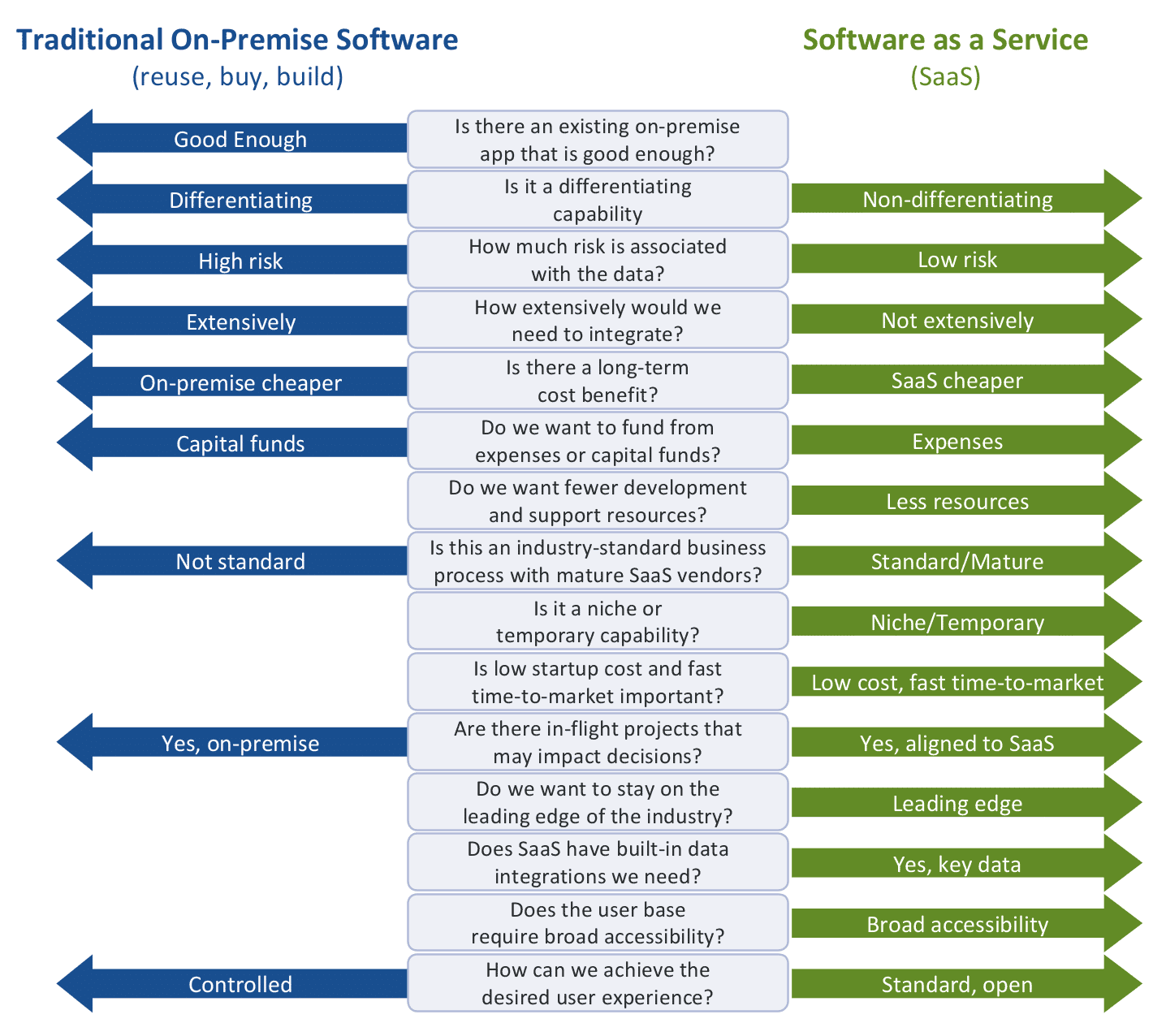Migrating On-Premises or Legacy Application Workloads in the Cloud
Author: Pramod Alluri | | November 18, 2022
Workload migration refers to moving organizational workload (typically a specific program or service) from one specific infrastructure environment to another such as a cloud-centric environment.
Cloud migration typically involves database migration, backups, and extensive restoration procedures. While not all businesses require workload migration, it is extremely beneficial for driving digital transformation efforts and creating an idyllic infrastructure equipped with cloud-based, microservice-based, and containerized applications that can operate with DevOps processes. Oracle Application Workload migration involves migrating Oracle application stacks that typically rely on on-premise servers to cloud-based environments.
Companies considering moving their existing on-premise or legacy application workloads to the cloud should consider the wide variety of benefits of cloud SaaS services for improving their data and server management strategy as well as what and how to move to a SaaS cloud server. Driven by various existing and future market dynamics; moving on-premise or legacy application workloads to a cloud environment can help align and scale with future prospective shifts in market dynamics, facilitate infinite process improvement opportunities and acquire and analyze unstructured data to facilitate informed decision-making processes.
Why Should You Migrate Your Workloads to the Cloud
1. Reduce IT Costs – Pay for Only What You Use
One of the biggest benefits of moving on-premise or legacy applications to cloud servers is the ability to significantly reduce existing IT costs. Your business can size, utilize, and pay for cloud resources that are being utilized at that time. Your business can also completely turn off cloud servers when they are not in use, hence substantially reducing your business’s overall cost expenditure over time.
You can avoid the implementing and maintaining on-premise servers cost such as the purchase of server hardware and software, electricity utilization to power and cool servers, floor space and ongoing server management. This enables you to pay for selective cloud resources on a need-demand basis.
2. Update IT Infrastructure Efficiently
Recent studies have shown that companies can save 15-40% on infrastructure costs by migrating to the cloud. Migrating on-premise or legacy application workloads to the cloud can be extremely transformative for helping your business update IT infrastructure more efficiently. When migrating application workloads and data systems to a cloud environment, infrastructure maintenance and updates are dynamically handled.
3. Scalability
Cloud servers provide your business with the ability to reduce costs by scaling-down cloud resources as demand for cloud resources changes. However, migrating on-premise or legacy application workloads to the cloud can also enable you to substantially scale-up cloud resources in situations such as a need to compute more resources, changing application life cycles, seasonal demand and much more. Therefore, your business can leverage the power of cloud servers to scale as per your business’s specific requirements at a particular time.
How to Modernize Application Landscape for Migrating Your Workloads to the Cloud
While almost all organizations can greatly benefit from the wide variety of benefits of a cloud environment, the higher your business’s cloud maturity level, the more of your workloads and data processing requirements can be processed by the cloud. Organizations with workloads that vary greatly across various periods in terms of disaster recovery, storage, and multi-tiered applications are typically ideal candidates for workload migrations. Therefore, choosing the right cloud service provider that can help your business avoid vendor lock-in, avoid time-consuming migration-related challenges and modernize organizational application stacks is extremely important.
Modernizing Application Landscape While Reducing Run Costs
Business Drivers
- Reduce run costs & modernize applications
- SW licenses
- Infrastructure hosting & services
- No impact on business for Oracle & non-Oracle footprint
Datavail Offerings
- Optimize application/database licenses (analyze current costs & negotiate for future)
- Migrate infrastructure to the Cloud (analyze current infrastructure & resize based on current & future usage with no business/configuration changes to application)
- Modernize applications (Recommend platform to build next gen applications, provide solutions on technology modernization)
Benefits to Customer
- Improvements in provisioning time – approx. 80%
- Improve batch job run – approx. 30%
- Reduction in response time – approx. 35%
- Savings in DB licenses & operational costs – 20-25%
- Reduction in backup time – approx. 40%
- Improvement in CPU utilization – approx. 30%
Benefits of Cloud SaaS for Your Business
Cloud SaaS is generally considered the most convenient and accessible cloud workload service since it is fully commoditized, simple to understand and highly scalable. Furthermore, all SaaS cloud resources such as data, applications, middleware, virtualization, and more are fully managed by cloud service providers. Therefore, your business will be able to avoid the effort required to accommodate configurations and testing, dependencies on other applications, various costs of cloud-deployment options and various other risks associated with migrating on-premise or legacy application workloads.

Research indicates that companies that use SaaS can bring new capabilities to the market up to 40% faster. Since SaaS services are already pre-configured and installed, there is a significantly lower time-to-benefit, reduced costs and automatic maintenance and upgrades. SaaS cloud systems also require significantly less resources than traditional on-premise software and are thus cheaper to maintain, have a faster time-to-market, are equipped with built-in key data integration features, and have niche/temporary and non-differentiating capabilities.
Improve Your Operational Strategy by Moving to a Cloud Environment
Moving your business on-premise or legacy application workloads to a SaaS cloud server can be extremely beneficial for helping your business facilitate more cost-effective operations, leverage more effective resources, utilize more flexible features and much more. SaaS Cloud server models are optimized and fully commoditized, they are the ideal choice for helping your business move on-premise or legacy application workloads to cloud environments. However, choosing the right cloud service provider is crucial for avoiding lock-in from a single cloud service provider as well as avoiding technical and operational difficulties related to cloud migration.
Review our presentation to learn more, Oracle Application Workloads in the Cloud. Feel free to contact our team of experts to discuss your needs and help you understand the wide variety of benefits your business can take advantage of by partnering with Datavail.
Related Posts
Amazon RDS vs Amazon EC2 | Amazon Web Services EC2 vs RDS
Ready to migrate your MySQL database to Amazon Web Services (AWS)? Which is better, Amazon RDS or Amazon EC2? Learn the pros and cons of each option.
Art of BI: What is Oracle Analytics Cloud and Why Should You Care?
Read on to learn about the release of Oracle Analytics Cloud, a service that includes Essbase Cloud, Business Intelligence Cloud, and more.
MongoDB and AWS- A Perfect Match
Amazon now supports MongoDB migration onto its AWS platform. Find out why MongoDB and Amazon S3 combination is a perfect match for the database infrastructure.



